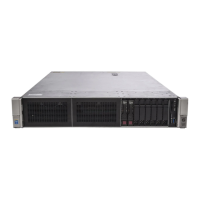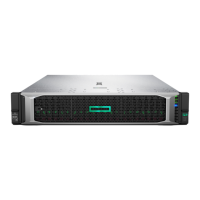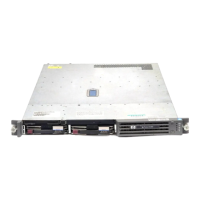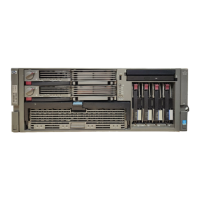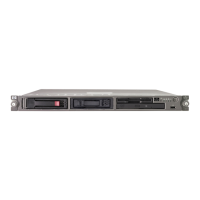D-4 New System Features
characteristics of the system being constructed.
HP-FL Disks
For medium to heavy load applications, configure no more than 5 disks per HP-FL interface card and no
more than 5 HP-FL interface cards in a single HP-PB I/O card cage. In this context, an HP-FL disk array in
high availability parity protection mode, striped mode, or independent mode, is considered to be a single
disk. Therefore, you should configure 3 to 5 disk arrays per HP-FL interface card. However, in the
independent mode, each disk mechanism in the array uses one spindle out of the total supported number of
spindles, whereas the entire array in high-availability mode or striped mode is seen as one spindle. If you
have configured the maximum number of HP-FL cards, do not configure any other HP-IB or SCSI disks in
the same card cage.
Single-Ended SCSI Cards
Small Computer System Interface (SCSI) cards let you connect disk and tape peripherals to a computer
system. Though each SCSI card has seven available device addresses, most SCSI peripheral devices use
only one. However, Optical Disk Library Systems use two-to-five SCSI addresses. A maximum of seven
devices can use the SCSI bus. Fast/Wide (F/W) SCSI devices may not be connected to Single-Ended cards.
F/W SCSI Cards
F/W SCSI cards (also known as F/W Differential SCSI cards) support up to 10 F/W SCSI devices per card.
Both F/W SCSI discs and F/W SCSI disk arrays can be mixed and matched on the same bus. However,
Single-Ended SCSI devices may not be connected to F/W SCSI cards. The card uses differential
transceivers that can support devices up to 25 meters away. When considering cable lengths, be sure to
include the length of cable from the SPU to the first storage device, the length of the cable within the storage
enclosure, and the length of the cable from one storage device to another.
Similar to Single-Ended SCSI cards, F/W SCSI cards let you attach devices to each other in a “daisy-chain”
configuration. The first and last devices on the SCSI bus must be terminated properly.
SCSI Disk Drives
Use the following table to determine the number of disks to configure on a SCSI interface card for optimum
performance. On a medium-to-heavy load application, optimum performance depends on whether or not the
Note - HP-PB I/O Card Cage Configuration Restrictions
• High Performance Cards (FDDI, FW SCSI, and HP-FL): A maximum of five high performance
cards are allowed per card cage.
• Installation Priority: Cards must be installed according to priority (see Table D-1. or Table D-2.)
starting with slot 13. High performance cards must be installed first.
• SCSI Cards: Do not exceed a maximum of three SE SCSI cards and a combined maximum of five
F/W SCSI and SE SCSI cards per card cage.
• HP-FL Cards: Do not configure any SCSI or HP-IB disks in the same card cage with five HP-FL
cards.
HP does not recommend putting printers on the same HP-IB card with a system disk. This configura-
tion has been reported to cause some data corruption on the system disk.
HP-IB cards are not supported on 9x9KS servers.
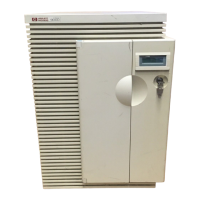
